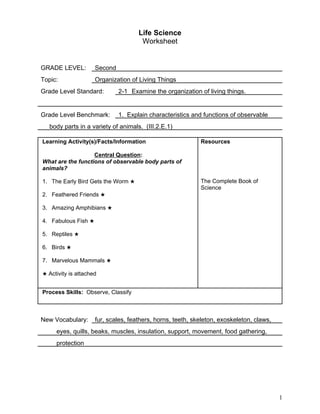This document contains a worksheet for 2nd grade students on the organization of living things. It includes 7 activities for students to learn about the observable body parts and functions of different animal groups like birds, fish, amphibians, reptiles and mammals. The activities include puzzles, drawings and labeling diagrams. They assess students' understanding by having them invent an imaginary animal showing body parts for key functions and explain the functions. The worksheet also covers classifying living things based on physical characteristics and has students compare and contrast animal groups.



























